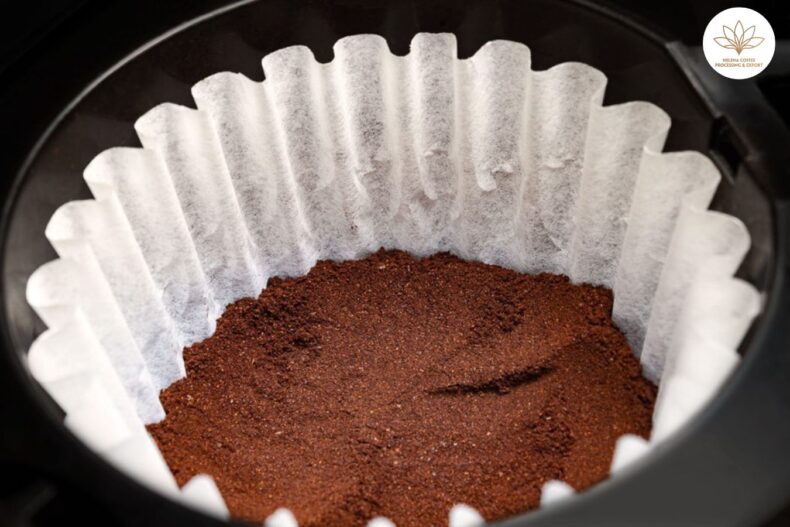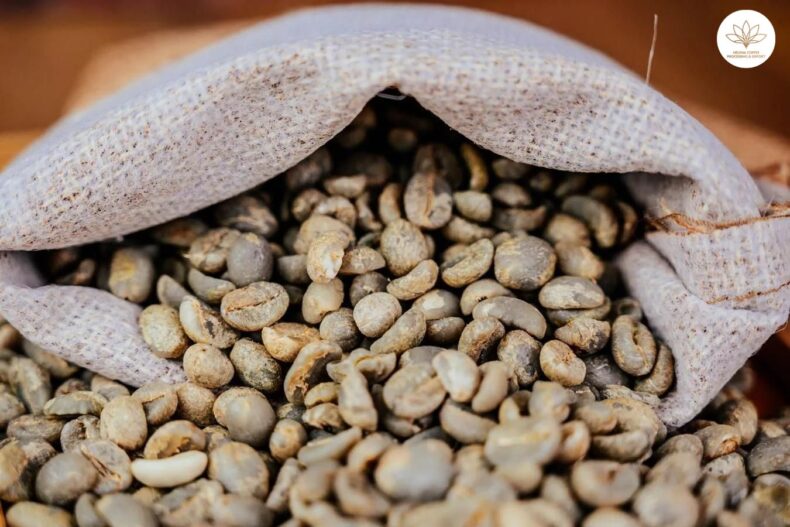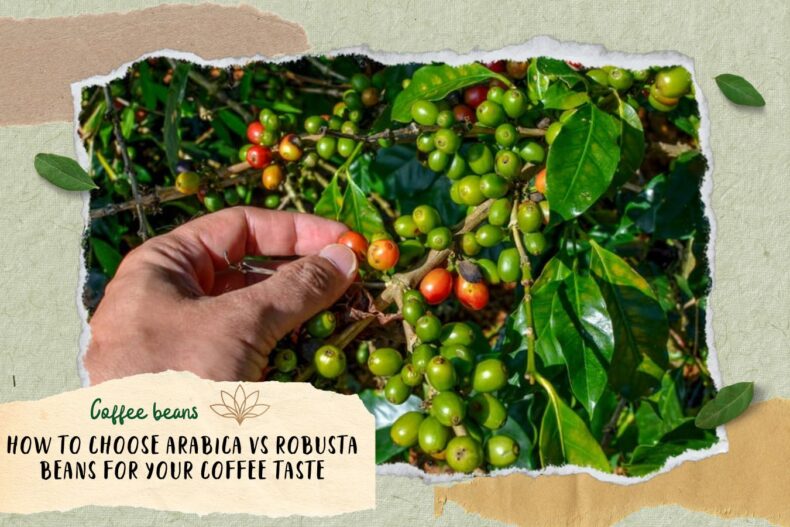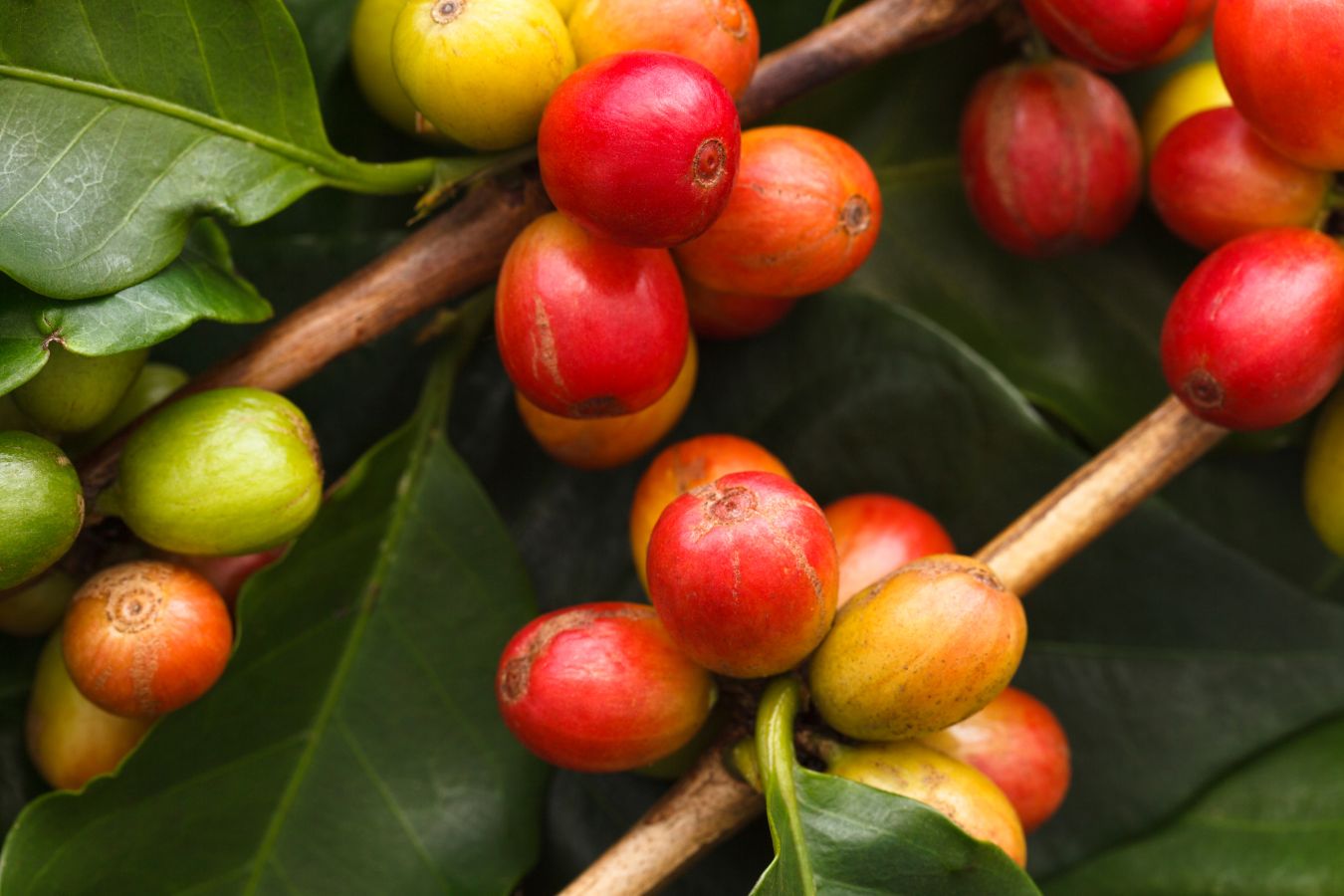
Arabica Coffee – Origin & Biological Properties – (Nomenclature: Coffea arabica ) is derived from the native coffee species of the southwestern highlands of Ethiopia.
This is one of the first coffee varieties to be planted and still occupies a dominant position in the structure of the world coffee industry, accounting for about 70% of global production.
Historical Origins of Arabica
Endemic C.arabica species are now very few in Ethiopia, while most existing populations of Arabica coffee trees result from hybridization.
Only in Ethiopia can one find wild Arabica plants in the rainforests of the highlands of southwestern Ethiopia or across the borders of neighboring countries such as southeastern Sudan and northern Kenya.
The varieties of coffee growing in the forests of Ethiopia have undergone human cultivation; they are often very high quality but are very susceptible to pests and diseases.
During the 16th century, the Arabica coffee plant was brought from Ethiopia to Yemen. Then, in the 17th – 18th centuries, Arabica coffee in general (because each Bourbon and Typica variety has its journey) was dispersed all over the world, which we can summarize as follows:
- The Dutch brought the Arabic Typica coffee plant from Yemen to Batavia, now known as Jakarta, in Indonesia and then back to the Netherlands before being carried by this empire (and the French) to China and South America.
- Meanwhile, Arabica Bourbon traveled from Yemen to the island of Bourbon (also known as La Réunion, located in the Indian Ocean). It was brought to Africa by the French in the 19th century.
Biological characteristics of Arabica coffee
Arabica coffee trees live in high mountains, often grown at an altitude of 1200 – 2200 m. The tree has a small canopy and dark green, oval leaves.
Mature coffee trees can be from 2.5 to 4.5m tall; if left to grow, wild ones can be more than 10m tall. The optimal temperature ranges from 15 – 24 o C, so it is better to tolerate the cold than with coffee (18 – 36 o C).
About 3 to 4 years after planting, coffee and tea can harvest. Usually, 25-year-old coffee is considered old and has no economic value. In the wild, trees can continue to live for about 70 years.
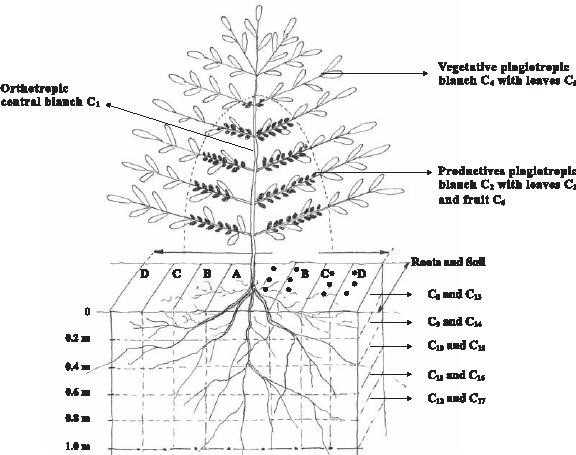
Development and distribution of Arabica coffee trees
Before the 19th century, Arabica was the only coffee variety produced globally. Arabica varieties were selected during this period and mainly focused on local adaptability, high yield, and good quality.
By 1920, coffee leaf rust on Arabica coffee plants had spread throughout the coffee country of Africa and Asia, causing many farmers to look for alternative crops.
While some countries have replaced coffee production with other crops, Indonesia has started again with the Robusta variety, with higher yields and greater tolerance to CLR.
Unfortunately, however, Robusta coffee produces lower-quality coffee. Therefore, in the late 1970s and 1980s, different countries began implementing breeding programs to create CLR-resistant varieties.

Today, about 125 varieties of Arabica coffee are widely distributed in many continents, from Africa, Latin America, Southeast Asia, and China to the Caribbean and the Pacific Ocean islands.
According to Wikipedia, from the original A. Bourbon and A.Typica, many different species of coffee, have been produced (some by natural mutations, some by artificial).
However, most of the world’s Arabica coffee plantations account for no more than 1% of the biodiversity of wild Arabica varieties in southwestern Ethiopia.
Research & classification of Arabica
According to ICO statistics, about 60% of coffee production (84.3 million bags in the crop year 2014/15) is from Arabica species.
Traditional varieties such as Typica and Bourbon, derived from native plant populations in Yemen, as well as some of their mutations, have long been considered high-yielding and exhibiting “standard” quality.
Only a few people, such as Laurina, Moka, or Blue Mountain are marketed that are of outstanding quality.
On the other hand, wild or semi-wild Arabica plants native to regions of Ethiopia and Sudan, such as Geisha and Rume Sudan, are not significantly involved in the trade because of low yields.
Here are some popular Arabica coffee varieties; you can see more varieties worldwide or download documents to study more clearly.
Arabica Typica varieties
According to World Coffee Research – World Coffee Research Organization, the Arabica Typica variety is commonly known as a group (The Typica group) with many sub-varieties; these descendants are grown scattered around the world and carry many types.
Different names like Criollo (Creole), Indio (in India) or Arábigo (Arabica) or Blue Mountain (in Jamaica), and Sumatra (in Indonesia).
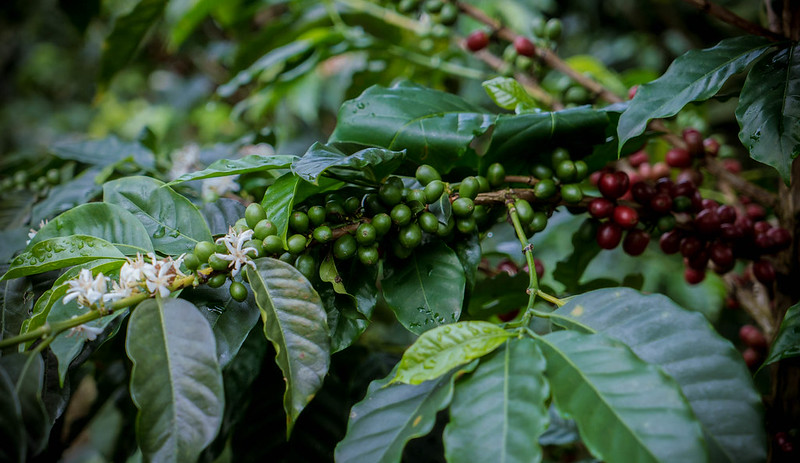
Today, coffee production in Latin America (the South American region) is still based on many coffee plants developed from the Typica and Bourbon varieties.
In Brazil, which accounts for 40% of global coffee production, 97.55% of coffee varieties are derived from Typica and Bourbon.
Sub-varieties of Arabica Typica
Coffee arabica Maragogype, a mutant of Typica, was first recognized in Brazil in 1870. This coffee variety produces large coffee beans. However, the distance between the pods (and fruit to leaf) is considerable. Big. Significant leads to poor productivity.
Arabica Pache – A natural mutation of the Typica variety involving a gene that causes plants to grow shorter than usual. The mixture was discovered in 1949 in Guatemala on the Brito farm in Santa Cruz Naranjo, Santa Rosa.
SL14 and SL34, both varieties, were selected in Kenya in the late 1930s at the Scott Agricultural Laboratory. Recent genetic tests have confirmed that SL14 and SL 34 belong to the Typica genetic group, economically essential coffee varieties in Kenya and Uganda.
Minimize from Rwanda, Possibly the oldest variety in Rwanda, and still important to small-scale coffee growers in Rwanda and Burundi.
According to Belgian coffee historian Edmund Leplae, Mibirizi was brought back to Rwanda from Guatemala in the 1910s. So it is most likely of Typica descent as Guatemala only grew 100% of Typica coffee then.

In addition, there are still some other dog breeds that inherit the Typica gene and are less known, such as Nyasaland (also known as Bugisu local, Nyasa), Harrar Rwanda (also known as Harraghe)
Arabica Bourbon variety
Besides its brother Typica, Bourbon Coffee is an almost “ultimate” link connecting Arabica coffee varieties. The high-quality correlation between these two varieties has been a measure of quality throughout the history of the coffee industry.
But some mutations have given Bourbon coffee a 20-30% higher yield than the Typica brothers.

The French planted the first Bourbon coffee trees on Bourbon (now Réunion) island in the middle of the Indian Ocean around 1708.
Today Bourbon is present throughout the Latin American continent and Africa, growing best in low-altitude areas huge. 1,100 – 2,000 meters high and 20 – 30% higher productivity than its brother Typica.
Types of Arabica Bourbon
Caturra – A natural mutation of the Bourbon coffee variety, a genetic modification that makes the plant shorter than usual (dwarfism).
From the original natural transformation, the Caturra variety has continued to be selected and bred by the Brazilian Institute of Agronomy (IAC for short).
Villa Sarchi (also known as La Luisa or Villalobos Bourbon) breed Catutta, a natural “dwarf” mutant of the C. Bourbon variety. This variety was discovered in Costa Rica in the 1950s.
Similarly, Pacas is also a Bourbon-born “dwarf” mutant, discovered in 1949 on a farm owned by the Pacas family in the Santa Ana region, El Salvador.
Arabica SL28 is one of Africa’s most popular and appreciated Arabica coffee varieties. From first being grown in Kenya in the 1930s, it was not long before SL28 was widely distributed throughout other parts of Africa (especially the Arabica growing regions of Uganda).

Bourbon itself still contains a very diverse ‘pedigree,’ in addition to the popular varieties listed above; we also have Tekisic – curated by the Salvadoran Institute of Coffee Research (ISIC) for almost 30 years, from 1949-1977; Venecia – selected by ICAFE in the Costa Costa; K7 – Selected after five generations at Scott Agricultural Laboratories, Kenya in 1936…
A cross between Typica and Bourbon
Mundo Novo is a natural hybrid between Bourbon and Typica varieties, first found at Mineiros do Tiete, Sao Paulo, Brazil. This “hybrid coffee” variety was initially grown in the municipality of Novo Mundo (now Urupês) in 1943.
The Mundo Novo coffee tree is characterized by its tall stature, so this variety is only widely grown in the regions. South America, but rare in Central America and the Caribbean (Mundo Novo was brought to Costa Rica in 1952 but not widely cultivated because farmers did not like its tall stature)
Arabica Catuai is the result of a cross between Mundo Novo and Caturra grown in Brazil in the late 1940s; today, Catuai accounts for 50% of the coffee area in Brazil and is widely used in Central America, typically Costa Rica and Guatemala.
Catuai coffee trees are small, easy to care for, have a characteristic yellow color and give a higher yield than Bourbon.

Pacamara crosses Pacas (Bourbon) and Maragogipe (Typica). Conducted by an incomplete pedigree selection by the Salvadoran Institute of Coffee Research (ISIC), Pacamara is unstable from generation to generation.
Other Arabica varieties
In the early 1980s, the need to develop Arabica varieties resistant to coffee leaf rust (CLR) caused by the fungus Hemileiavastatrix forced geneticists to search for other sources of resistance genes.
Therefore, most breeders have decided to use Timor Hybrid (a natural cross between C. arabica and C. canephora), a hybrid with Arabica, as the primary source of disease resistance genes.
Various invasive varieties have been developed (e.g., Catimor, Sarchimor) that combine high yield and resistance to rust.
However, even if the overall agronomic performance improves, the flavor quality of the new varieties remains a subject of controversy.
For example, the Costa Rica 95 variety is inferior in quality to traditional types; in contrast, the Castillo variety grown in Colombia, the Ruiru 11 variety developed in Kenya or some resistant varieties developed in Brazil show potential. Better taste performance
Finally, it is impossible not to mention Arabica Java – Contrary to popular belief, Java is derived from Typica. Molecular genetic studies by World Coffee Research revealed that Javanese Arabica originated from an indigenous coffee population in Ethiopia known as the Abysinia. Today Javanese Arabica is the epitome of high-quality coffee in Central America.
Above are some popular Arabica coffee varieties now. Helena., JSC will continuously update the latest types – Don’t forget to share & contribute your comments so that more people can better understand Arabica coffee varieties!
>>> Origin & Characteristics of popular Coffee varieties | Vietnam Coffee Export
Reference source:
- www.worldcoffeeresearch.org/ – Categories Coffees
- Britta Folmer’s Book of Coffee Crafts and Science
- www.ncausa.org/ – National Coffee Association of America, Inc
- www.kew.org/ – Coffea arabica
